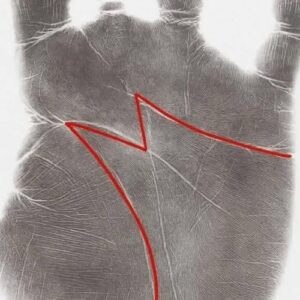When the ground began shaking violently beneath Alaska’s southern coastline Wednesday afternoon, thousands of residents knew exactly what to do—run for higher ground. The powerful tremor that rattled the region triggered immediate tsunami warnings, sending coastal communities into emergency mode as sirens wailed and evacuation orders echoed across radio waves and smartphone alerts.
The Earthquake That Shook Alaska
At precisely 12:38 p.m. local time on Wednesday, July 16, 2025, a devastating 7.3 magnitude earthquake struck the waters off southern Alaska. The United States Geological Survey quickly identified the epicenter as being located in the Pacific Ocean, approximately 65 miles southeast of Sand Point, near the remote Shumagin Islands along the Alaska Peninsula. This powerful seismic event sent shockwaves through the region, both literally and figuratively, as communities braced for what could have been a catastrophic natural disaster.
The earthquake’s intensity was immediately apparent to residents across the affected region. Buildings swayed, windows rattled, and the unmistakable rolling motion of a significant seismic event left no doubt that this was a major geological occurrence. Within minutes of the initial tremor, seismic monitoring stations across Alaska and the Pacific Northwest began registering the earthquake’s magnitude and potential implications.
Dr. Sarah Chen, a seismologist with the University of Alaska Fairbanks, explained the significance of the event: “A 7.3 magnitude earthquake is considered major on the Richter scale. When it occurs beneath or near ocean waters, as this one did, the potential for tsunami generation becomes a serious concern that requires immediate action from emergency management officials.”
Immediate Response and Evacuation Efforts
The Alaska Tsunami Warning Center, operated by the National Oceanic and Atmospheric Administration, wasted no time in issuing comprehensive tsunami warnings for coastal areas stretching from the Kennedy Entrance near Homer to Unimak Pass near Unalaska. The warning zone encompassed approximately 700 miles of Alaska’s southern coastline, affecting thousands of residents in both major population centers and remote coastal villages.
Emergency management officials across the region immediately activated their tsunami response protocols. Air raid sirens, which had been silent for routine testing, suddenly filled the air with their urgent warnings. Simultaneously, the Emergency Alert System began broadcasting evacuation orders through radio and television stations, while wireless emergency alerts flooded smartphones with critical safety information.
Rachel Lord, the mayor of Homer, described the immediate aftermath: “Within minutes of the earthquake, we could see the effects of our emergency preparedness training. People were moving quickly and efficiently toward higher ground. The spit area, which is particularly vulnerable to tsunami waves, was evacuated remarkably fast, though this did create some traffic congestion as everyone tried to reach safety simultaneously.”
The evacuation process revealed both the strengths and challenges of Alaska’s emergency response systems. While residents demonstrated remarkable preparedness and awareness of tsunami dangers, the sheer geography of Alaska’s coastal communities presented logistical challenges. Many areas have limited road access, and reaching higher ground required careful navigation of narrow coastal highways that quickly became congested with evacuation traffic.
Tsunami Generation and Ocean Response
Approximately 90 minutes after the initial earthquake, scientists confirmed what emergency officials had feared—the seismic event had indeed generated a tsunami. David Snider, a tsunami coordinator with NOAA’s National Tsunami Warning Center, provided crucial updates to anxious coastal communities: “Our monitoring stations detected measurable tsunami waves generated by this earthquake. We recorded sea level changes of approximately three inches above normal levels at several monitoring stations along the Alaska Peninsula.”
While three inches might seem minimal to those unfamiliar with tsunami science, experts explained that even small initial waves can indicate more significant ocean disturbances. The science behind tsunami generation is complex, involving the displacement of massive amounts of ocean water when the seafloor suddenly shifts during underwater earthquakes.
Dr. Michael Rodriguez, an oceanographer specializing in tsunami research, elaborated on the phenomenon: “When an earthquake of this magnitude occurs beneath the ocean floor, it can cause sudden vertical displacement of the seafloor. This displacement pushes water upward, creating waves that radiate outward from the epicenter. While the initial wave height might be modest, these waves can travel at speeds of 400-500 miles per hour across deep ocean waters.”
The tsunami waves generated by Wednesday’s earthquake were tracked by an extensive network of deep-ocean detection buoys positioned throughout the Pacific. These DART (Deep-ocean Assessment and Reporting of Tsunamis) buoys provide real-time data about wave height, speed, and direction, enabling scientists to make accurate predictions about coastal impact timing and severity.
Community Response and Human Stories
The earthquake and subsequent tsunami warning brought out both the best and most anxious aspects of human nature in Alaska’s coastal communities. Social media platforms filled with videos and photographs documenting the evacuation process, providing a real-time glimpse into how communities respond to natural disaster threats.
In Seward, a woman who had recently returned to Alaska after 25 years away captured a particularly poignant moment on video. Her footage showed streams of people walking quickly away from the waterfront, their faces showing the calm determination that comes from living in a region where natural disasters are an accepted part of life. “Everyone knows what to do,” she said in the video. “We’ve all practiced this, but you never know if today’s the day it’s really happening.”
Emergency shelters were quickly established at strategic locations throughout the warning zone. Kodiak High School and North Star Elementary School were among the facilities designated as evacuation centers, staffed by Red Cross volunteers and local emergency management personnel. These shelters provided not just physical safety but also emotional support for residents, particularly elderly individuals and families with small children who found the evacuation process particularly stressful.
The town of Kodiak, with its population of approximately 5,200 residents, demonstrated remarkable community solidarity during the crisis. Local businesses remained open to provide supplies and refreshments to evacuees, while radio stations maintained continuous emergency broadcasting to keep residents informed of changing conditions.
Scientific Analysis and Aftershock Activity
Following the initial earthquake, the Alaska Earthquake Center began intensive monitoring of seismic activity in the region. Over the subsequent 24 hours, scientists recorded more than 20 aftershocks, with the strongest measuring 5.2 on the Richter scale. This level of aftershock activity is considered normal following a major earthquake, though each tremor served as a reminder to residents that the geological situation remained unsettled.
Dr. Michael West, a prominent seismologist with the Alaska Earthquake Center, provided context for the earthquake within Alaska’s broader geological framework: “Alaska sits at the intersection of several major tectonic plates, making it one of the most seismically active regions in the United States. In fact, Alaska experiences approximately 80% of all earthquakes that occur within U.S. territory. Most of these are minor and go unnoticed by the general public, but events like Wednesday’s 7.3 magnitude earthquake serve as important reminders of the powerful geological forces at work beneath our feet.”
The specific location of Wednesday’s earthquake—near the Shumagin Islands—places it within the Alaska-Aleutian Subduction Zone, one of the most active earthquake-generating regions in the world. This area represents the boundary where the Pacific Plate slides beneath the North American Plate, creating the conditions for both frequent smaller earthquakes and occasional major seismic events.
Historical Context and Geological Significance
Wednesday’s earthquake inevitably drew comparisons to other significant seismic events in Alaska’s history. The most recent earthquake of similar magnitude occurred on June 10, 1996, when a 7.2 magnitude tremor struck near the Andreanof Islands in the Aleutian chain. That event, while powerful, occurred in a more remote location and generated less concern for populated coastal areas.
However, the specter of Alaska’s most catastrophic earthquake continues to influence emergency planning and public awareness throughout the state. The Great Alaska Earthquake of March 27, 1964, remains the most powerful earthquake ever recorded in North America, with a magnitude of 9.2. That devastating event fundamentally changed how Alaska approaches earthquake and tsunami preparedness.
The 1964 earthquake struck near Prince William Sound and was felt as far away as Seattle, Washington. The resulting tsunamis destroyed numerous coastal communities throughout Alaska and caused damage as far away as Hawaii, California, Oregon, and even Japan. The death toll reached 139 people, with most fatalities resulting from the tsunamis rather than the earthquake itself.
This historical context explains why Alaska’s current emergency response systems prioritize rapid evacuation and comprehensive public education about tsunami risks. The lessons learned from 1964 have been incorporated into modern warning systems, building codes, and community preparedness programs.
Recovery and Ongoing Monitoring
By late Wednesday afternoon, tsunami warnings had been downgraded to advisories, and by early evening, all official warnings had been lifted. However, emergency management officials advised coastal residents to remain vigilant for at least 24 hours, as ocean conditions can remain unstable even after the immediate tsunami threat passes.
The successful response to Wednesday’s earthquake demonstrated the effectiveness of Alaska’s emergency preparedness infrastructure while also highlighting areas for continued improvement. Communication systems performed well, evacuation routes functioned as designed, and community response was generally orderly and efficient.
As Alaska’s coastal communities returned to normal activities, scientists continued monitoring seismic activity and ocean conditions. The earthquake served as a valuable real-world test of emergency systems and community preparedness, providing important data for future disaster planning.
The event also reinforced the reality of living in one of the world’s most seismically active regions. For Alaska’s residents, earthquakes and tsunami warnings are not abstract possibilities but regular reminders of the powerful natural forces that shape their daily lives. Wednesday’s earthquake, while potentially catastrophic, ultimately became another chapter in Alaska’s ongoing story of resilience in the face of natural challenges.





